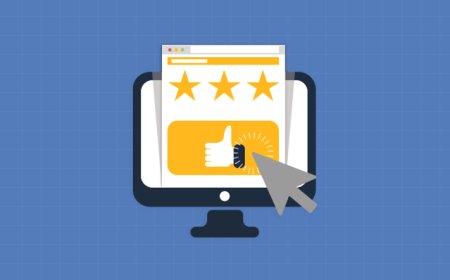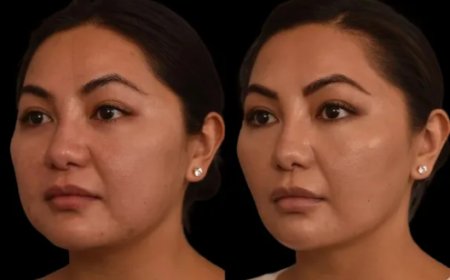Biosimulation Market: Demand Forecast and Future Outlook (2034)
Biosimulation is transforming the way pharmaceutical and biotechnology companies develop new drugs and therapies.

Biosimulation Market Overview
Biosimulation is transforming the way pharmaceutical and biotechnology companies develop new drugs and therapies. It involves the use of advanced computer modeling and simulation techniques to predict how drugs will interact with the human body, reducing the need for costly and time-consuming clinical trials. This technology helps scientists and researchers design better molecules, optimize dosing, and improve the safety and efficacy of new treatments. As the demand for personalized medicine grows, the adoption of biosimulation is rising rapidly among research institutes and contract research organizations as well. Its ability to cut costs and accelerate timelines makes it a vital tool in modern drug discovery and development.
Expert Market Research Insights on Biosimulation Market
Stepping beyond traditional research methods, Expert Market Research brings clarity to the expanding biosimulation market by providing detailed insights, growth drivers, and future forecasts. With the surge in personalized medicine and demand for efficient drug development, the role of biosimulation is more significant than ever. Their comprehensive reports help businesses identify emerging trends, key opportunities, and competitive landscapes. Backed by reliable data and sharp analysis, Expert Market Research empowers companies to make informed strategic decisions and stay ahead in this rapidly evolving space. Investors and stakeholders can rely on these insights to tap into the multi-billion-dollar biosimulation industrys immense growth potential.
Biosimulation Market Size
In 2024, the biosimulation market reached an impressive valuation of USD 3.50 Billion, showcasing its growing importance in the life sciences sector. This robust market size reflects the increasing investments by pharmaceutical companies in advanced digital solutions to streamline drug research and minimize risks. The rise in chronic diseases, coupled with a surge in biologics and biosimilars development, has significantly contributed to this market expansion. With a forecasted compound annual growth rate (CAGR) of 16.90% during 2025-2034, the market is poised to grow exponentially. By 2034, it is projected to achieve a remarkable value of USD 16.68 Billion, indicating strong future potential for stakeholders and investors.
Biosimulation Market Trends
The biosimulation market is witnessing rapid technological advancements and strategic collaborations aimed at enhancing simulation accuracy and expanding applications. One significant trend is the integration of artificial intelligence (AI) and machine learning algorithms into biosimulation software. These technologies help generate more precise models, automate repetitive tasks, and speed up complex data analysis. Another notable trend is the increased adoption of cloud-based solutions and subscription-based models, which offer scalability and cost-effectiveness to small and mid-sized companies. Moreover, the industry is seeing a surge in partnerships between software developers and pharmaceutical giants to co-develop next-generation biosimulation platforms. These trends collectively highlight the markets dynamic and innovation-driven nature.
Biosimulation Market Opportunities and Challenges
The biosimulation market offers significant opportunities for growth, especially with the push for more efficient drug development pipelines and personalized treatment options. There is immense potential for companies to expand their services into emerging economies where pharmaceutical R&D spending is rising. Furthermore, the shift towards biologics and precision medicine creates fresh avenues for simulation applications. However, the market also faces challenges, including the complexity of developing highly accurate models and the need for extensive validation to meet stringent regulatory requirements. Additionally, high initial costs and the lack of skilled professionals in some regions can hinder widespread adoption. Overcoming these barriers will be key to unlocking the markets full potential.
For more information about this report visit
Biosimulation Market Segmentation
- Breakup by Product and Services
- Software
- Services
- Breakup by Delivery Model
- Subscription Model
- Ownership Model
- Breakup by Application
- Drug Discovery
- Drug Development
- Others
- Breakup by End User
- Pharmaceutical and Biotechnology Companies
- Contract Research Organization
- Academic Research Institutes
- Others
- Breakup by Region
- North America
- Europe
- Asia Pacific
- Latin America
- Middle East and Africa
Biosimulation Market Growth
With rising R&D costs and stricter regulations, pharmaceutical companies are increasingly turning to biosimulation as a cost-saving and risk-mitigating solution. This trend is driving significant growth in the biosimulation market, with more firms adopting advanced simulation tools to replace traditional lab testing. The technologys ability to predict drug behavior, simulate clinical trials, and model disease progression accelerates decision-making and shortens time to market. Moreover, increased funding for research in fields like oncology and rare diseases is further fueling demand. As more academic research institutes integrate biosimulation into their studies, the market is set for sustained growth backed by technological innovation and expanding applications.
Biosimulation Market Forecast
The future of the biosimulation market looks promising, with projections indicating strong double-digit growth in the coming years. With a CAGR of 16.90% between 2025 and 2034, the industry will multiply nearly fivefold to reach USD 16.68 Billion by 2034. This growth will be driven by continuous advancements in software capabilities, rising demand for personalized therapies, and broader adoption among pharmaceutical giants and smaller biotech startups alike. Emerging markets in Asia Pacific and Latin America are expected to contribute significantly, thanks to increasing investments in healthcare infrastructure and research activities. The expanding use of cloud-based platforms will also make biosimulation more accessible and scalable for diverse end users worldwide.
Biosimulation Market Competitor Analysis
The biosimulation market is highly competitive, with leading players focusing on innovation, partnerships, and expanding their global footprint. Major companies include:
- Certara Inc. A pioneer in biosimulation software with a strong global presence.
- Dassault Systemes Offers advanced simulation tools for life sciences innovation.
- Simulation Plus Known for robust drug modeling and simulation software.
- Schrodinger Inc. Focuses on physics-based computational solutions for drug discovery.
- Advanced Chemistry Development Inc. Provides cheminformatics and modeling solutions.
- Physiomics PLC Specializes in oncology biosimulation services.
- Genedata AG Delivers data analysis platforms for biopharma R&D.
- Thermo Fisher Scientific Offers integrated simulation and laboratory solutions.
- Immunetrics Develops biosimulation software for immunology applications.
- BioSimulation Consulting Inc. Provides expert biosimulation consulting services.
- Yokogawa Insillico Biotechnology GmbH Focuses on cell-based biosimulation.
- Chemical Computing Group ULC Offers molecular modeling and simulation tools.
Find More Report:































